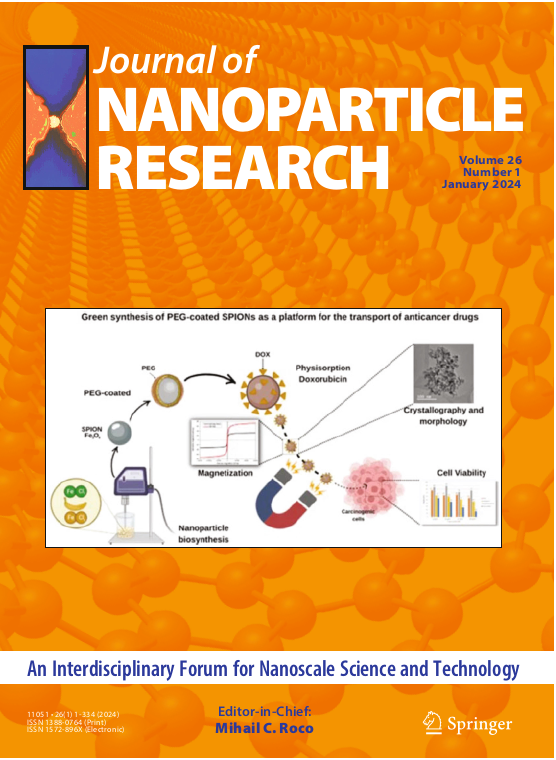Electrochemical synthesis of nano-hydroxyapatite homogeneously doped with europium and modified with folic acid
Abstract
Hydroxyapatite (Hap) is a mineral extensively studied as an applied biomaterial due to its biocompatibility and physicochemical capabilities. Many methods of Hap synthesis have been developed, and multiple modifications have been proposed to improve its behaviour under different biological contexts and applications, like doping Hap with lanthanides to introduce luminescent characteristics to the material or adding molecules to interact with specific cellular receptors. The aim of this study was to synthesize a nanocrystalline Hap using an electrochemical method, also modified with a europium homogeneous doping and folic acid, as a potential applied biomaterial design. The material synthesized was extensively characterized and confirmed as a crystalline nanometric Hap, and the Eu homogeneous distribution within the nanomaterial was achieved after testing different variations of the electrochemical method. Also, folic acid (FA) modification of the material was completed via a direct interaction between the FA and the Hap-Eu surface. Hap-Eu nanoparticles synthesized were biocompatible and demonstrated luminescent properties within a cellular context, confirming its potential as an applied biomaterial. Thus, the homogeneous Eu3+-doped Hap nanomaterials obtained through this method of synthesis, and its FA modification, proved to be practical candidates for further research on novel and more specific biomaterials.
Graphical abstract
Alternative text: The figure shows a schematic diagram of Hap-Eu synthesis, with several images. First, a photograph of the equipment used, consisting of a power source connected to a mechanical stirrer with rotating electrodes, below them is a water bath over a magnetic stirrer plate. A second photo with a detailed view of the reaction pot inside a water bath where electrodes are shown inside the reaction solution of Ca, EDTA and phosphate; in the reaction pot Eu was added using two methods a single addition and a multiple addition. Third photo shows resulting Hap-Eu white powder and fourth photo has the Hap-Eu after folic acid modification, resulting in a yellowish powder. Bottom line of the graphical abstract shows the (Eu+Ca)/P ratio over time, the nanometric shape and the luminescent properties of the nanomaterials synthesized, and they correspond to Fig. 2d, Fig. 7a and Fig. 8b of the article respectively.


 求助内容:
求助内容: 应助结果提醒方式:
应助结果提醒方式:


